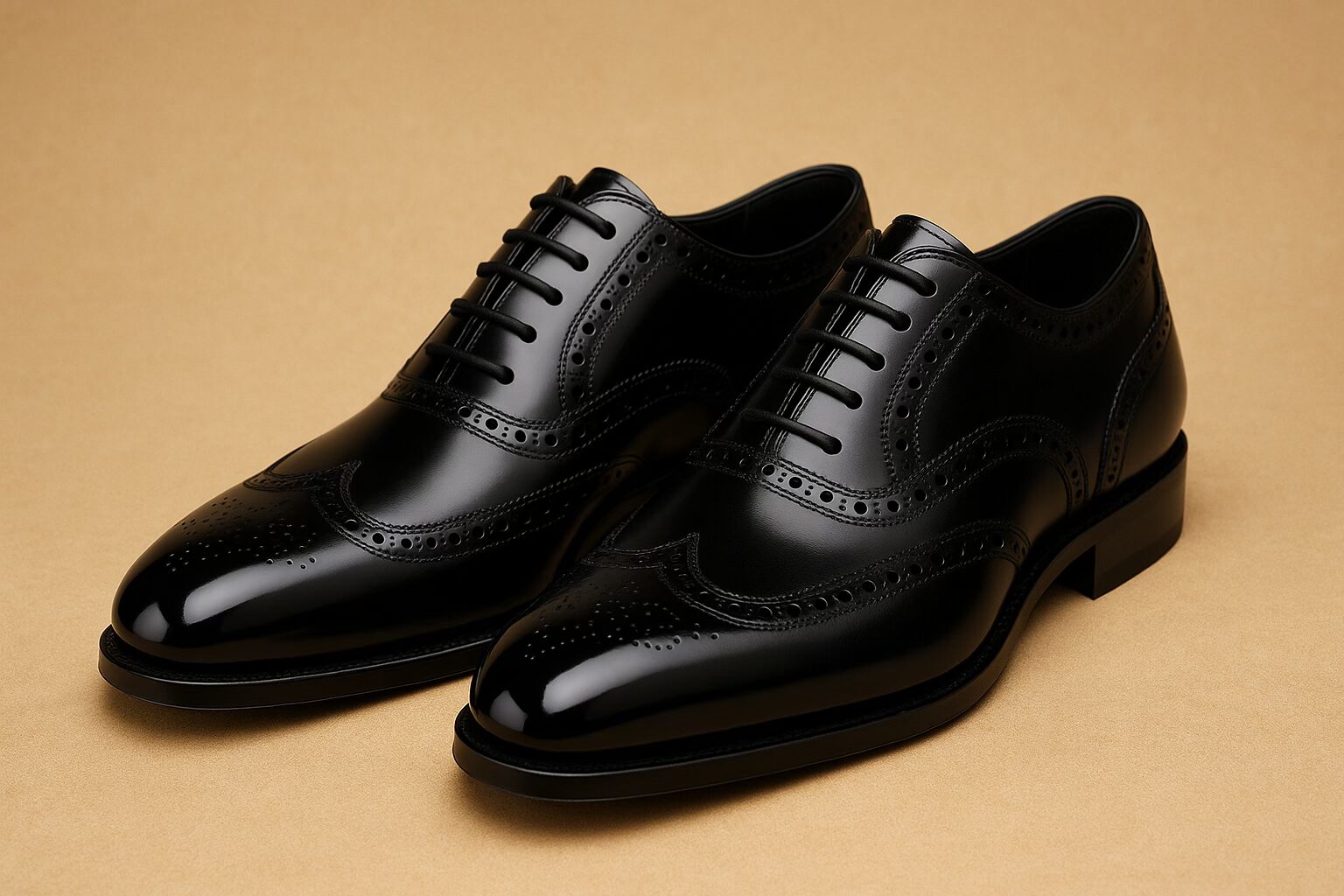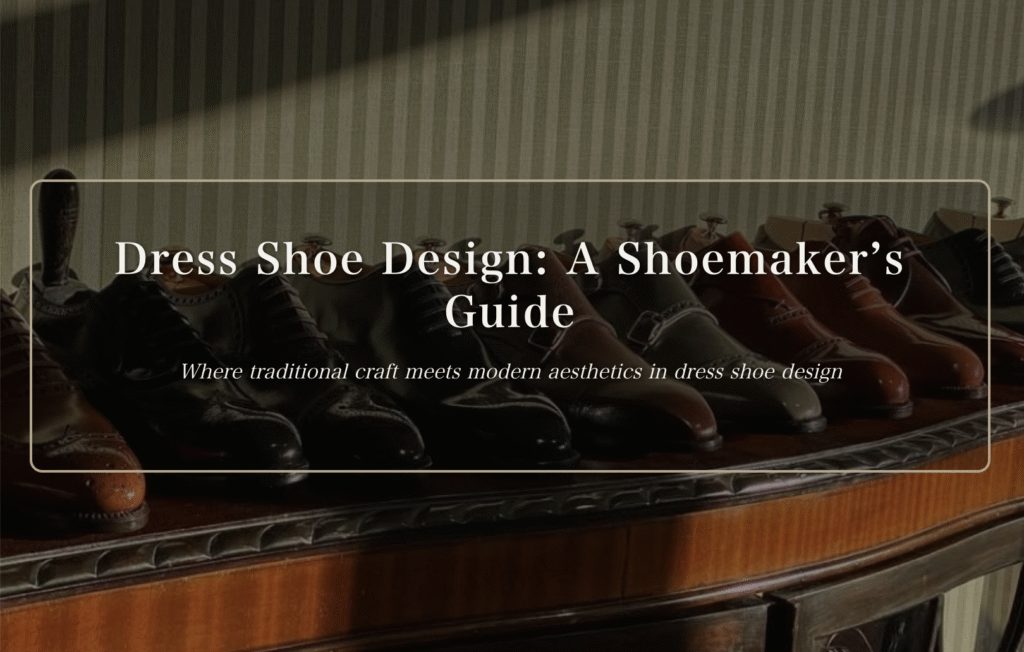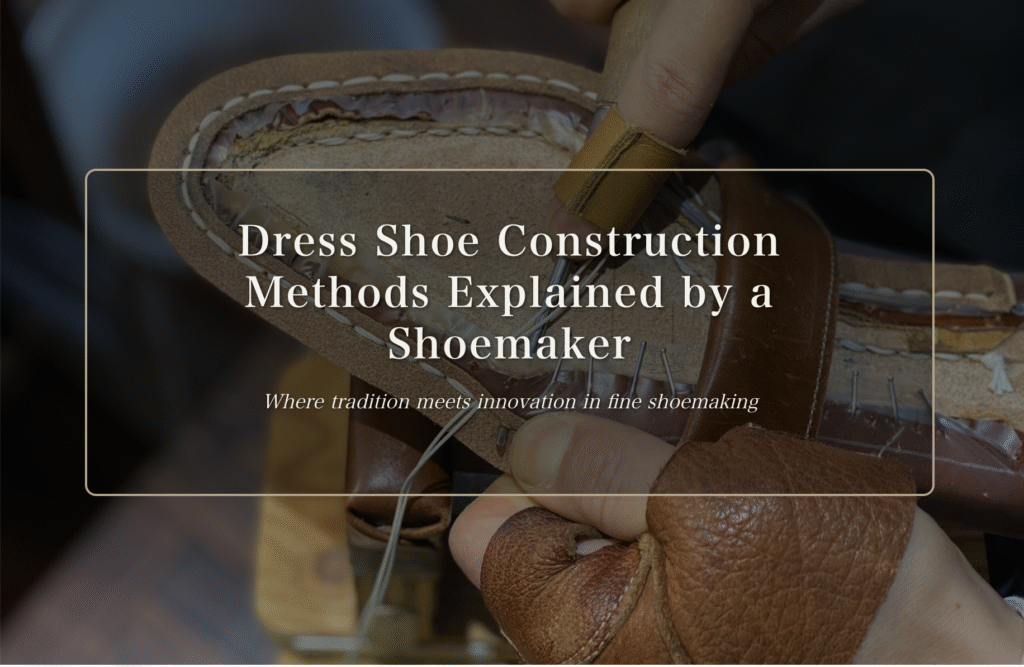Shoemaker’s Guide: 16 Dress Shoe Styles
Updated: |
Author:
Masayuki Kaneko
The world of men’s dress shoes gets deeper the more you learn. Pairs that look similar at a glance actually reflect distinct styles shaped by long history—each with its own character and level of formality. From a shoemaker’s perspective, this guide walks through 16 essential dress shoe styles in order of formality, explaining what sets each design apart.
Wholecut (ホールカット)
As the name suggests, a wholecut uses a single luxurious piece of leather to form the upper. With seams only at the heel—or none at all in seamless builds—it showcases top-grade hides and exceptional making skill. Because it requires large, blemish-free leather and precise lasting, the technical difficulty is very high.
Thanks to its minimalist purity, the wholecut is among the most formal dress shoe styles. In black calf or patent leather, it pairs with black tie and other formalwear, projecting quiet refinement on special occasions.
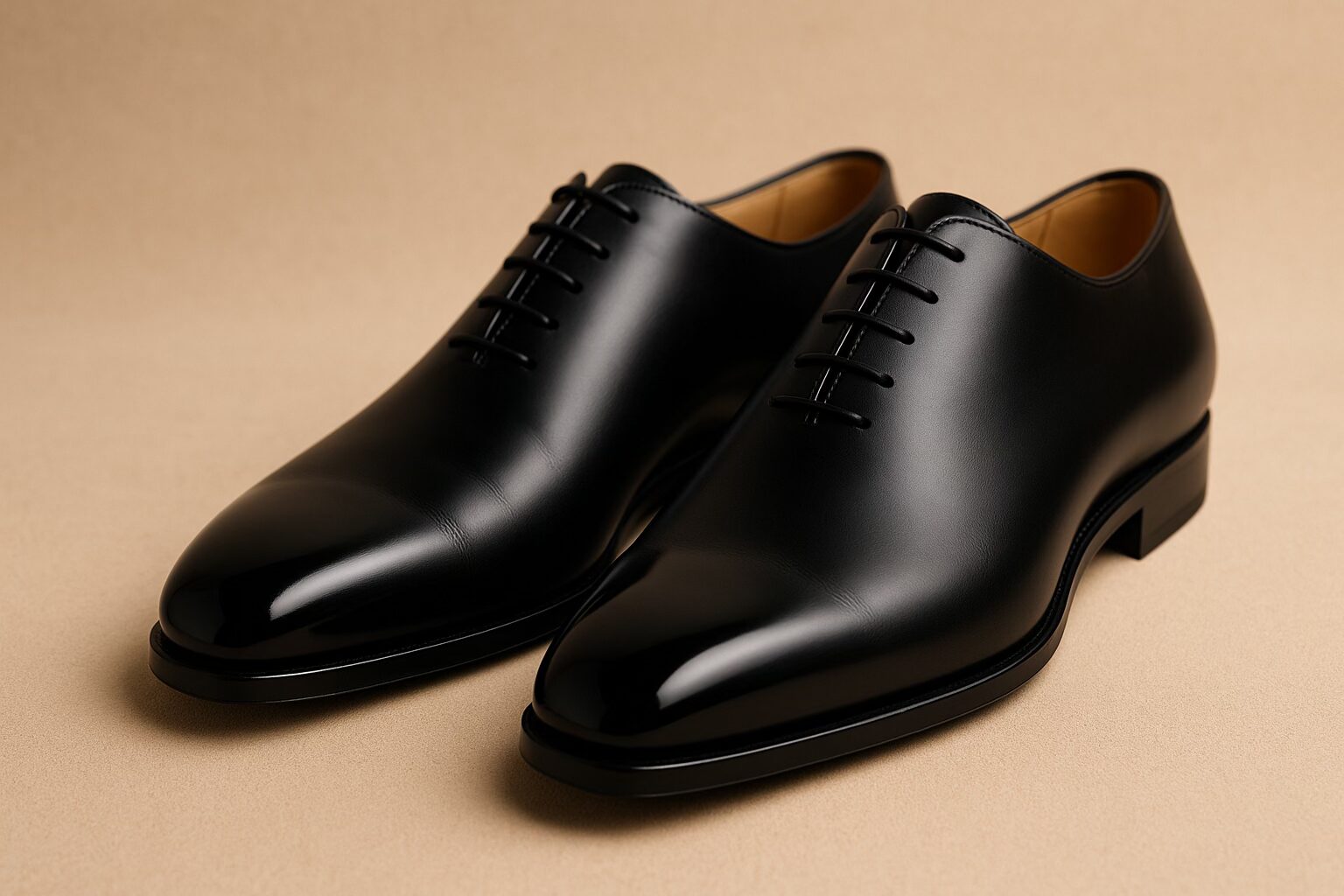
Oxford Cap Toe (Straight Tip)
Often called the “straight tip” in Japan, the cap toe Oxford is a foundational style. It combines closed lacing (quarters stitched under the vamp) with a neat cap across the toe. The disciplined lines suit nearly any formal setting—from ceremonies to high-stakes business—making it a wardrobe essential.
Its name traces to 19th-century Oxford University students. While the cap once added durability, today the design signals integrity and trustworthiness—especially in black.
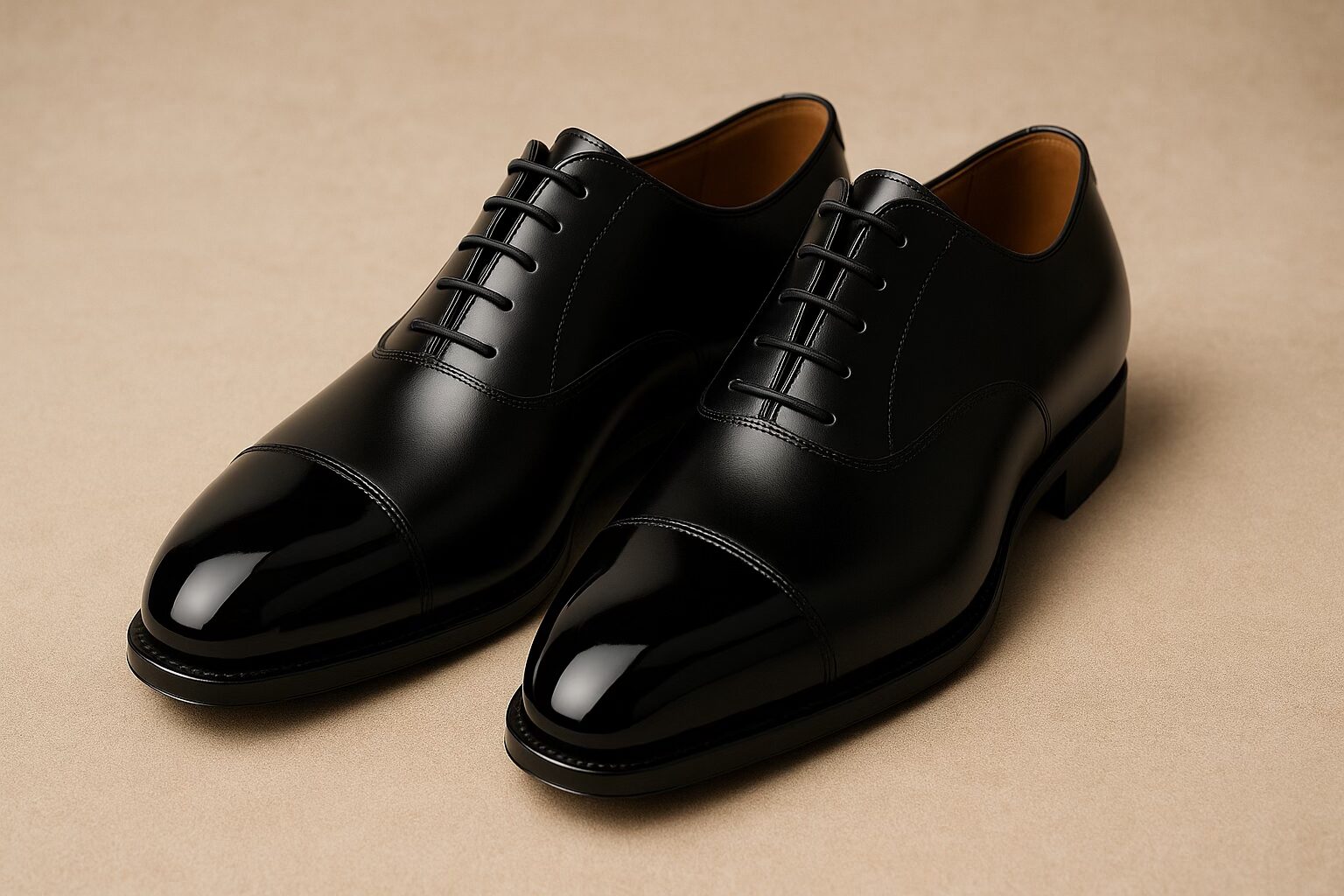
Quarter Brogue
A quarter brogue adds perforations along the cap seam of a straight-tip Oxford. Among brogued styles, it is the most restrained and thus relatively formal. Without a toe medallion, it keeps a clean look ideal for business suits while offering a touch of ornament.
Brogueing originated as functional drainage in Scottish and Irish footwear for wetlands; over time it became decorative. The quarter brogue perfectly balances dignity and subtle flourish.
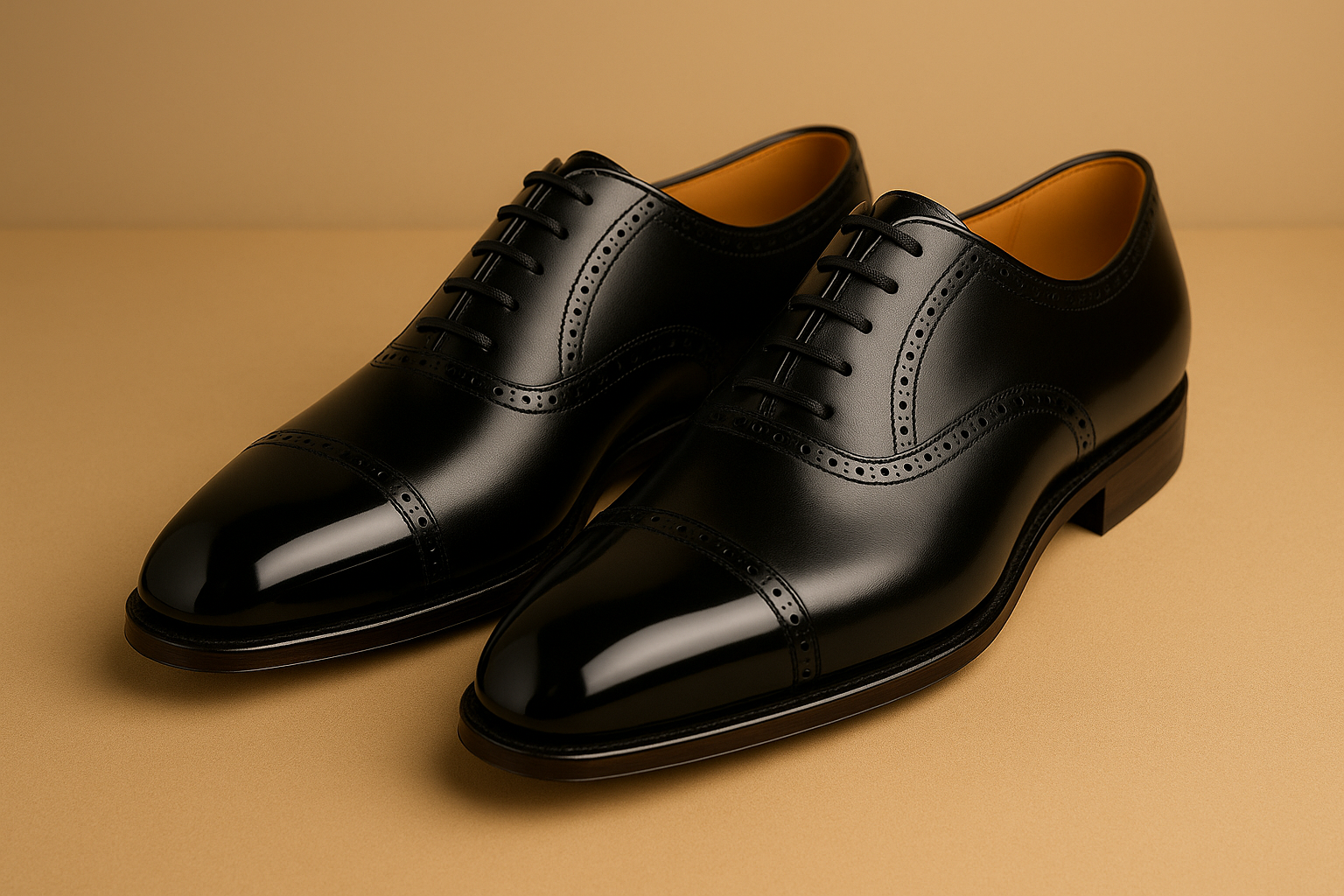
Semi Brogue (Half Brogue)
Expanding on the quarter brogue, the semi brogue adds a decorative toe medallion. Credited to John Lobb in 1937 as a middle ground between plain Oxfords and full brogues, it lends tasteful flair to modern business attire.
Combining the discipline of the cap toe with ornamental perforations, the semi brogue embodies “beauty in utility,” working from classic suits to smart-casual tailoring.
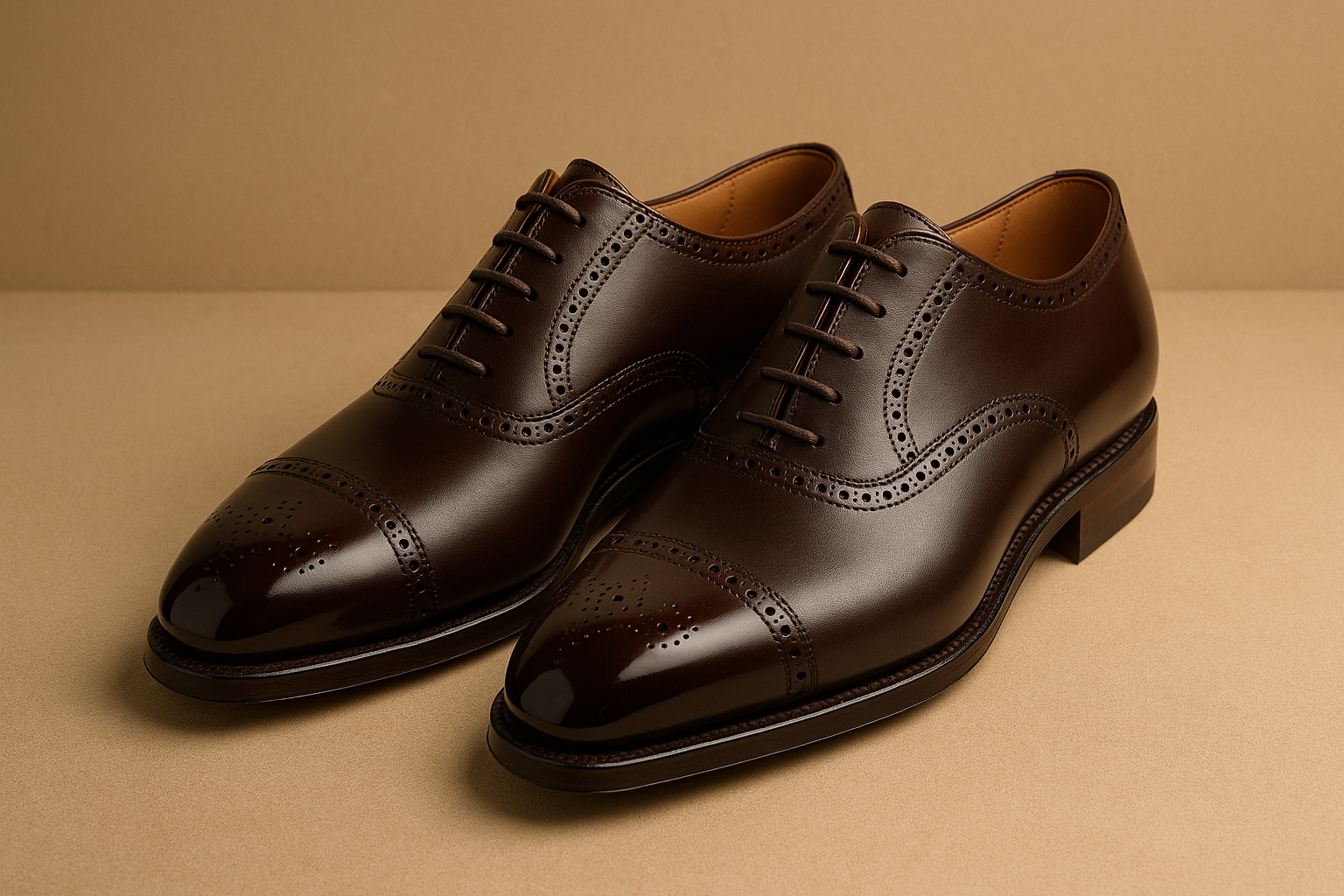
Full Brogue (Wingtip)
Also known as the wingtip for its W-shaped toe pattern, the full brogue is the most ornate brogued style. Once a country shoe with functional drainage, it became fashionable in the 20th century—famously favored by the Duke of Windsor.
Given its decoration, it pairs best with tweed, casual tailoring, and smart weekend looks—especially in brown tones that highlight its heritage charm.
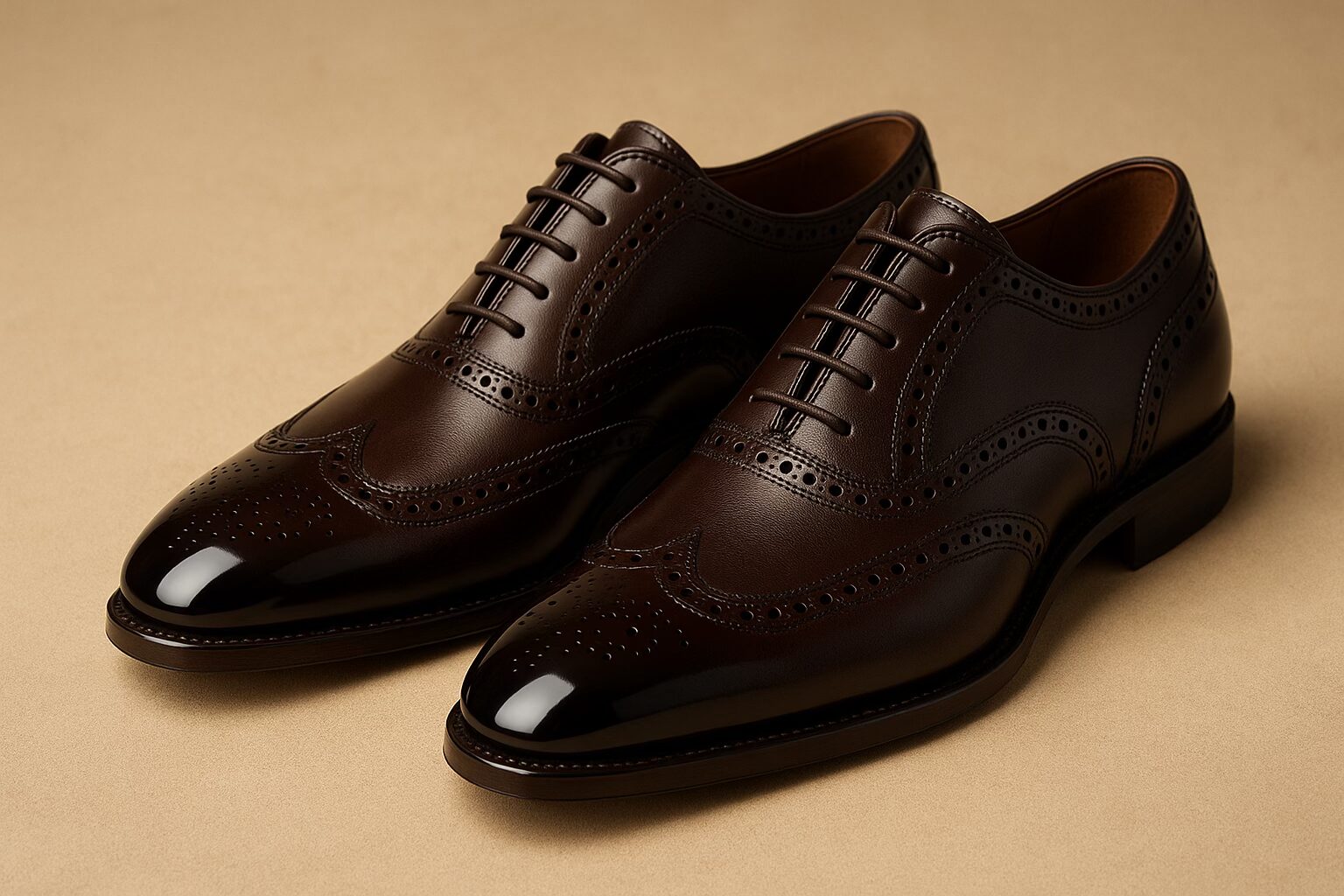
Single Monk Strap
Fastened with one strap and buckle instead of laces, the single monk has roots in footwear worn by monks—hence the name. The buckle adds a refined accent distinct from lace-ups.
Formality sits between Oxfords and Derbies, suiting business to smart casual. The clean strap line elevates outfits while remaining practical and easy to put on.
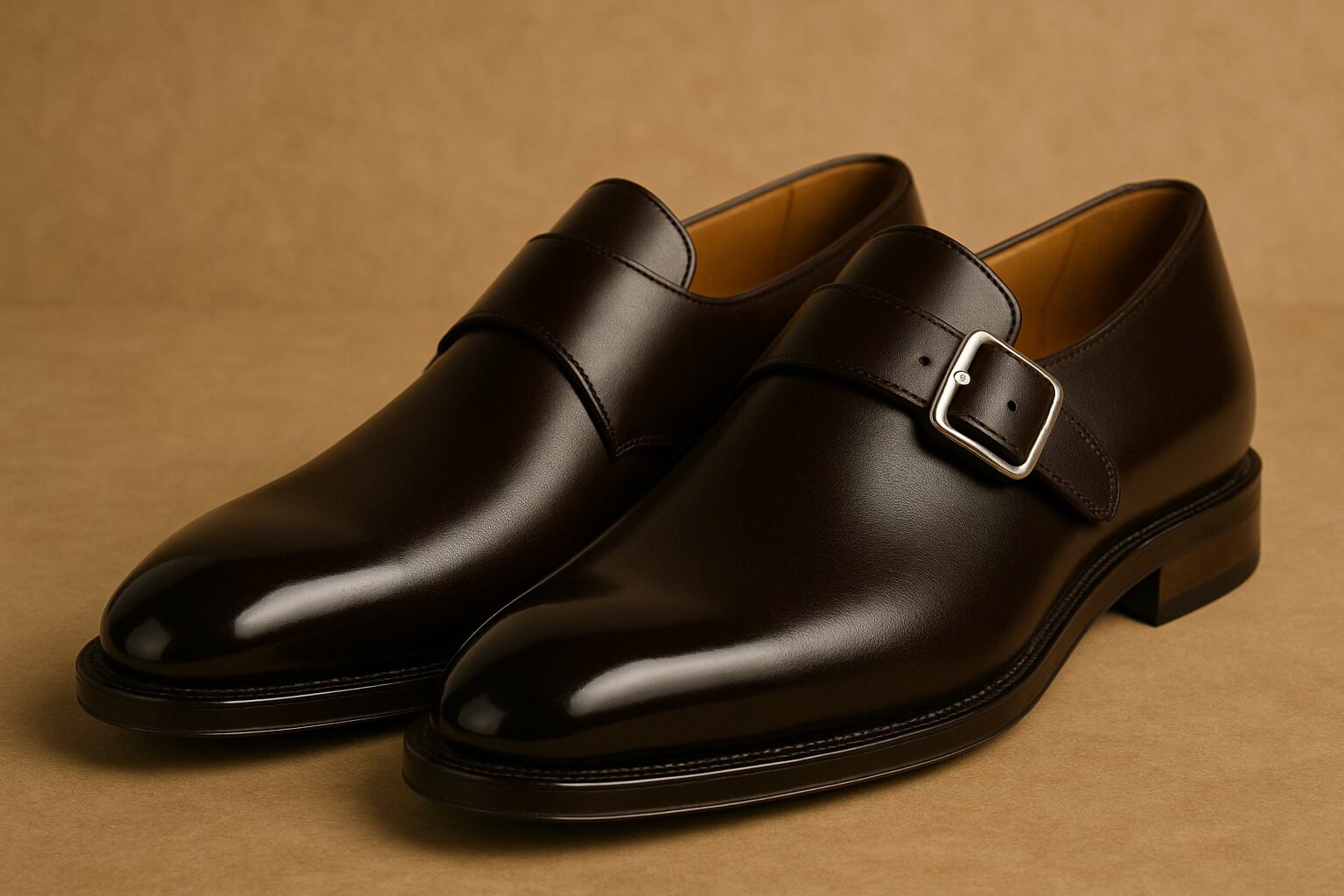
Plain Toe Derby
Combining an undecorated toe with open lacing, the plain toe Derby is simple and practical. The open quarters allow easier entry and accommodate higher insteps, making it comfortable and versatile from business to casual.
Linked to 19th-century military footwear attributed to Field Marshal Blücher (hence “blucher”), the clean design showcases leather quality and takes a polish beautifully.
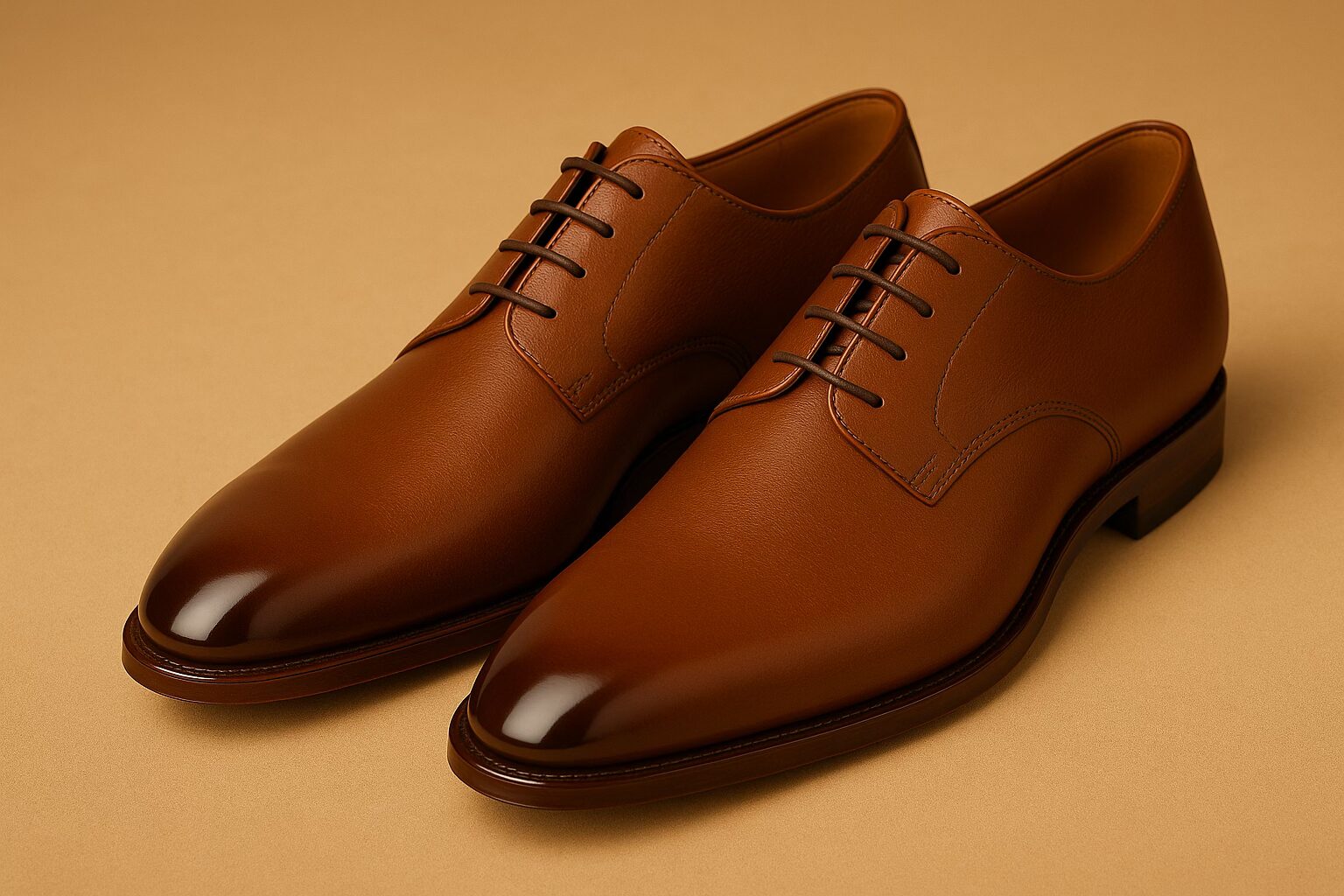
Double Monk Strap
Featuring two straps and buckles, the double monk is bolder than the single. Popularized in the mid-20th century, it now spans smart casual to dressy looks, offering a distinctive alternative to lace-ups.
The twin straps create a balanced silhouette that adds interest to suits and separates while remaining quick to take on and off.
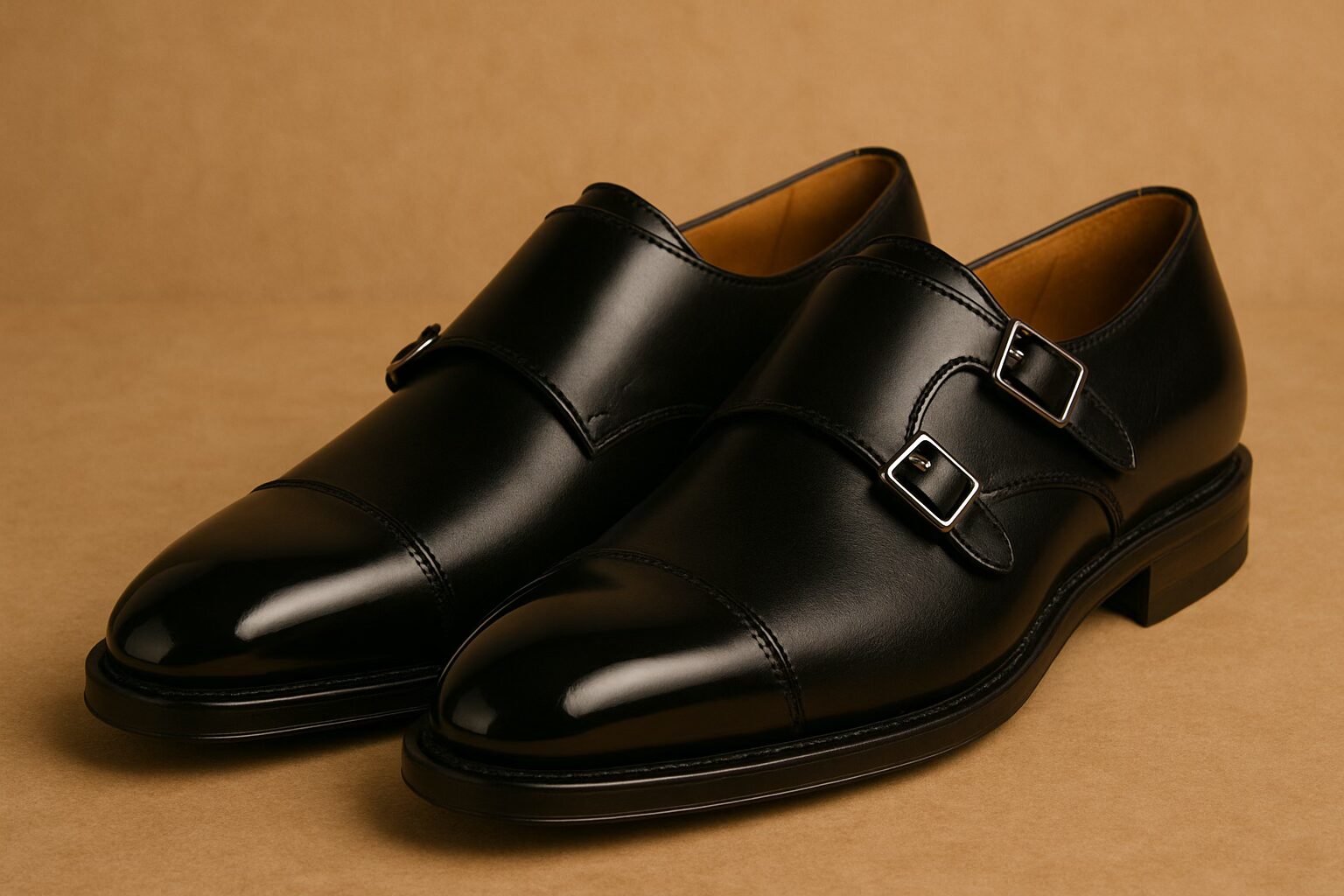
Side Elastic
Side elastic shoes place stretch panels on both sides of the instep—the forerunner of the Chelsea boot. Credited to J. Sparkes Hall in 1837 (shoemaker to Queen Victoria), the design fits securely without laces or buckles, making for quick on/off and smooth comfort.
The elastic flexes with movement, reducing fatigue over long wear. Clean lines suit business through casual, especially with slim trousers.
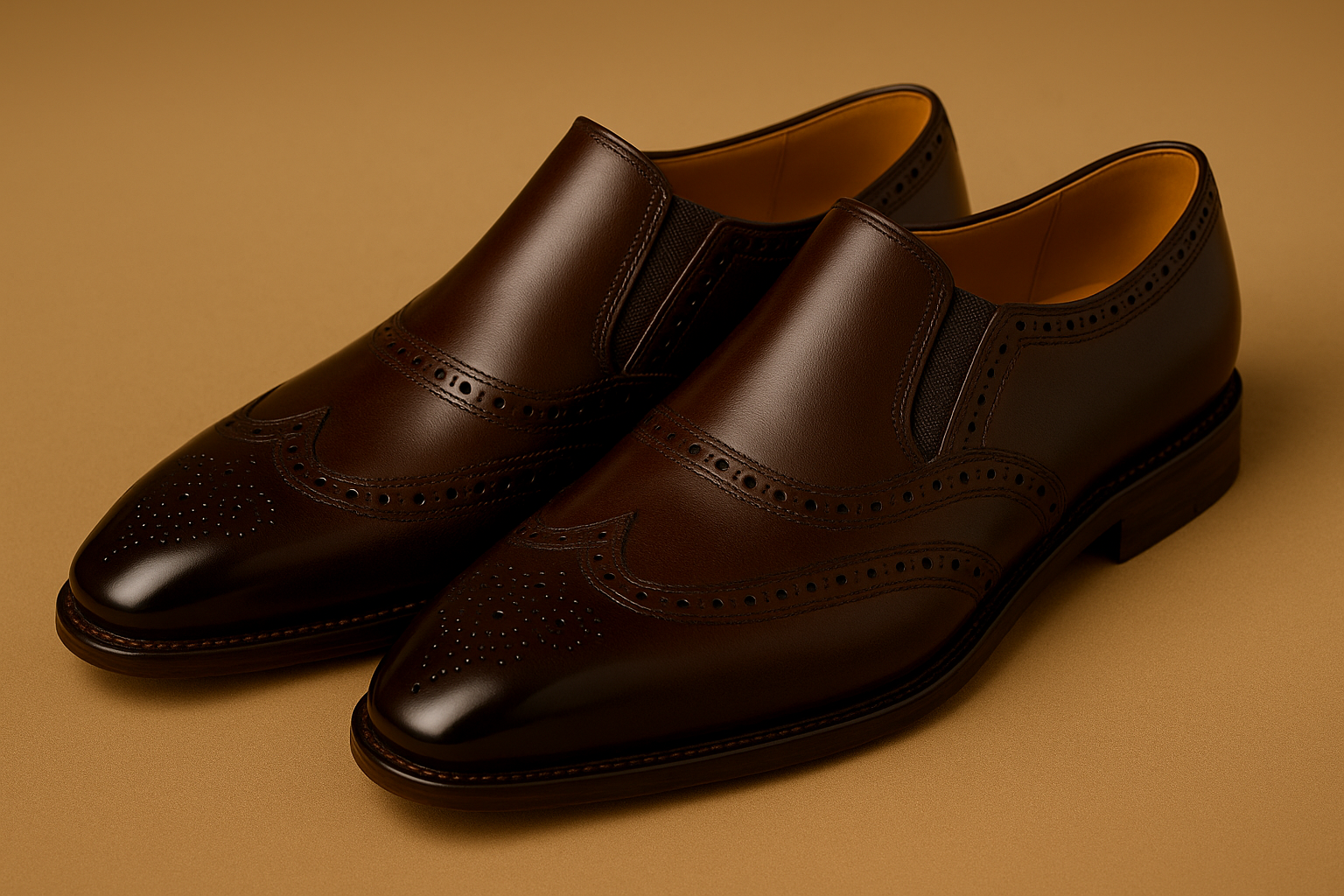
U-Tip Derby
Defined by a U-shaped seam around the toe (a moc seam), the U-tip draws on moccasin traditions later adopted into European shoemaking. Paired with Derby lacing, it reads relaxed yet refined.
The seam can add flexibility at the forefoot for comfortable walking. It shines with business-casual looks and American-trad outfits—think chinos and denim.
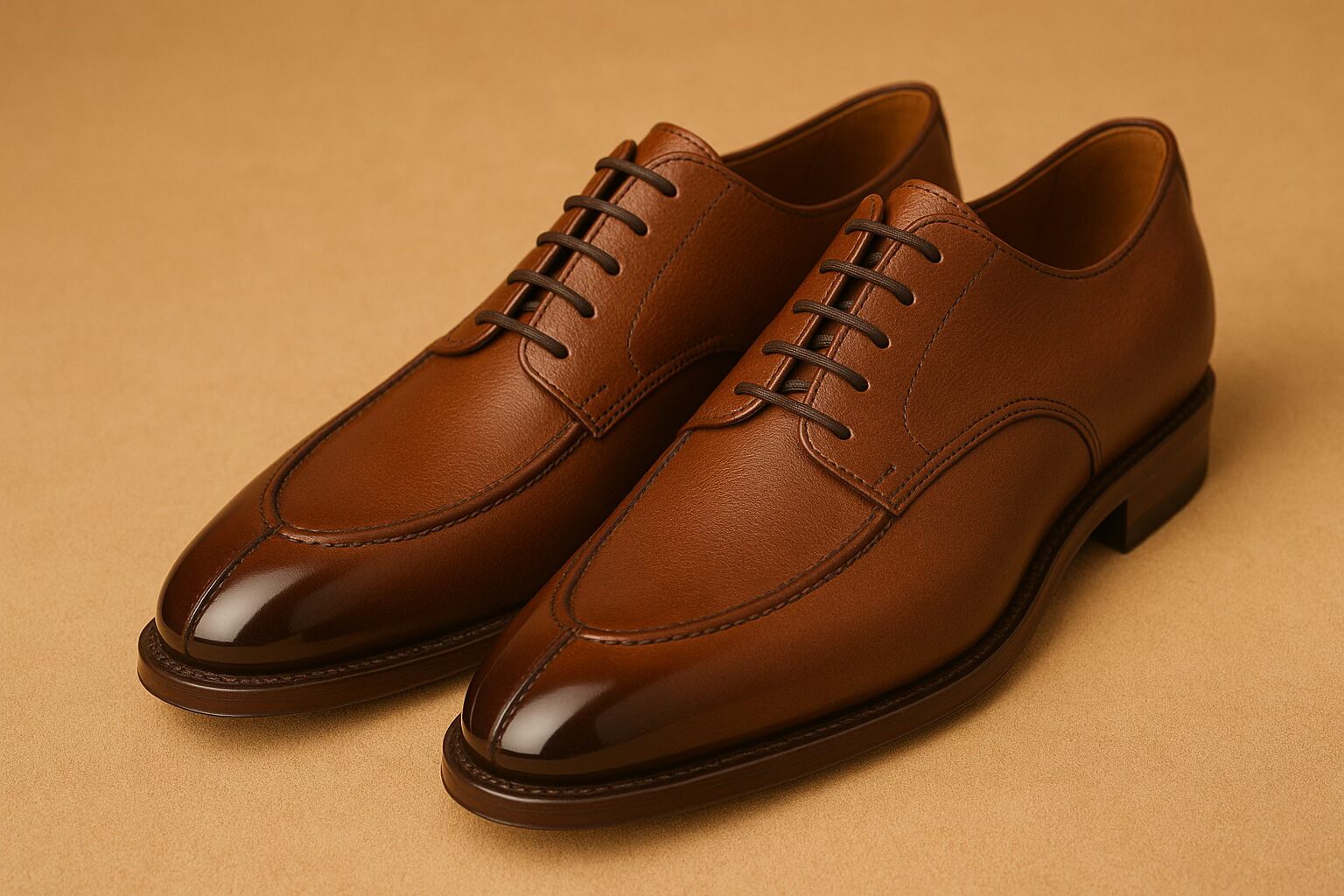
Ghillie Shoes
A Scottish traditional shoe with no tongue and laces that wrap the ankle. The term “ghillie” comes from Gaelic for a guide or attendant; the open construction once aided drainage in wetlands.
Today, ghillies appear with kilts in formal Highland dress and as characterful casual shoes—rich in cultural heritage and function.
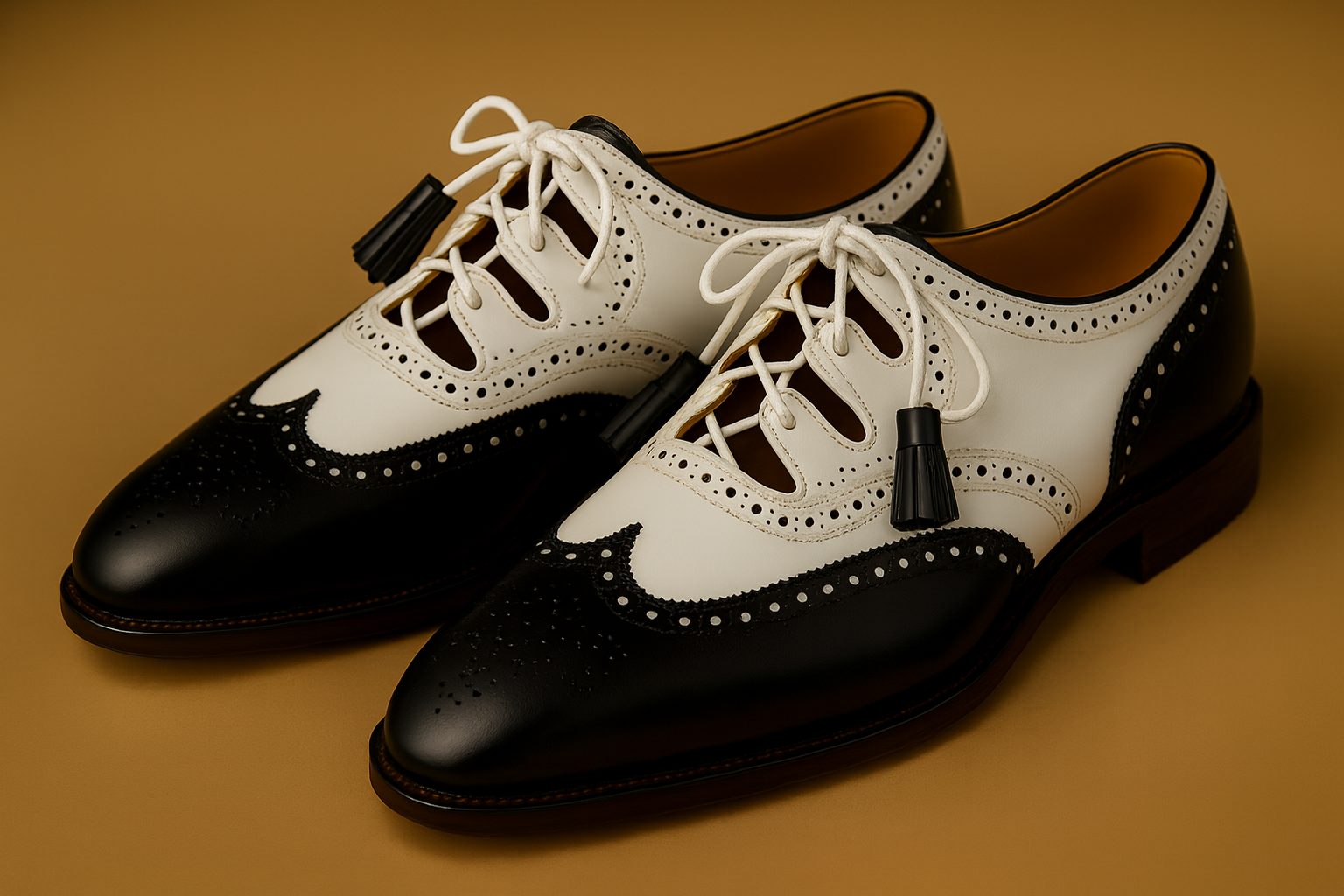
Loafers
Slip-on shoes without laces or buckles, loafers emerged in the U.S. in the 1930s and now span penny, tassel, and bit styles. They suit modern lifestyles with quick on/off and easy comfort.
From casual to business-casual, loafers pair well with everything from denim to tailored separates.
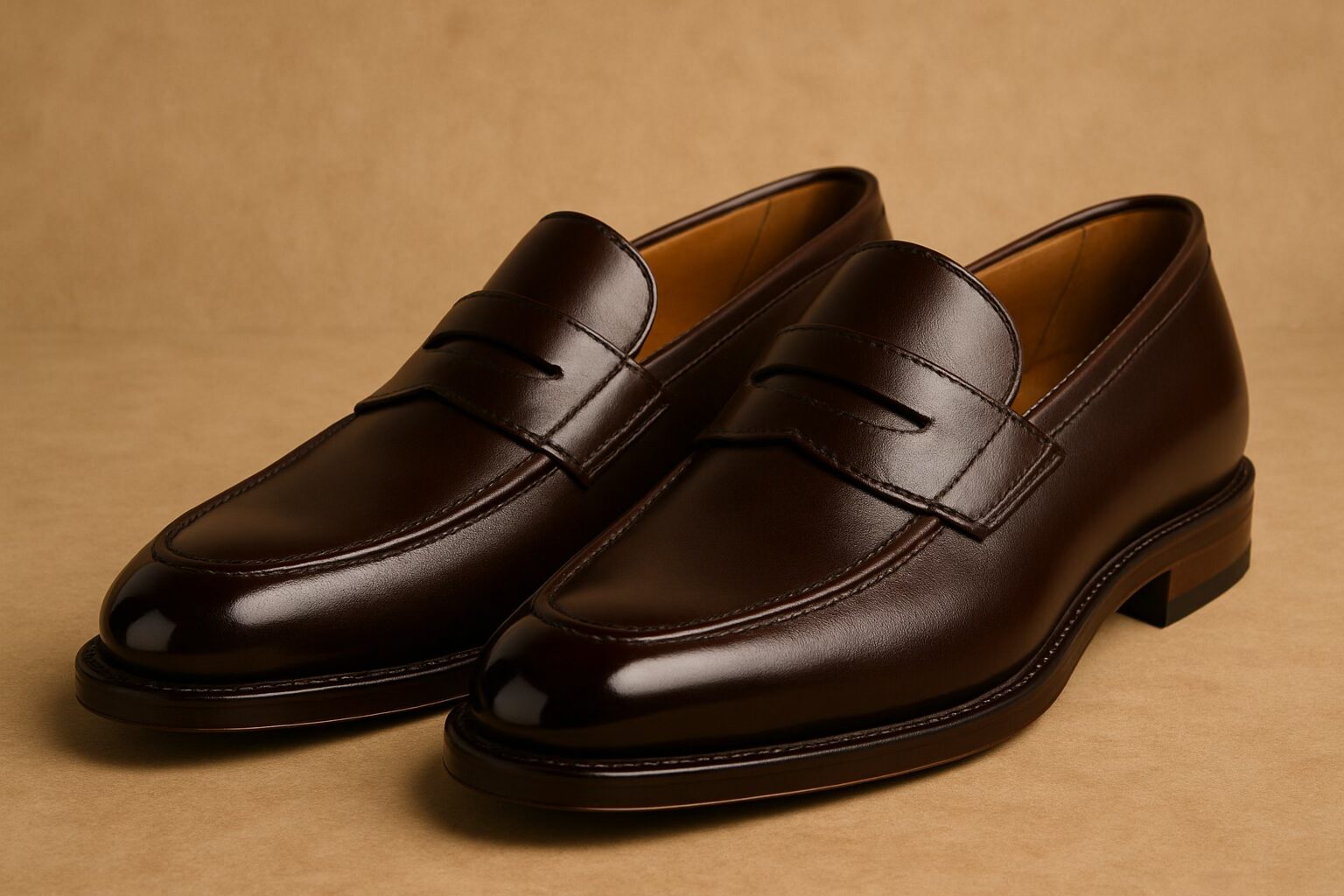
Chukka Boots
Ankle-high boots with two or three eyelets, chukkas likely take their name from periods in polo. Popular since the 1950s, they often come in suede and lean casual.
Great with jeans, chinos, and seasonal tailoring, brown suede chukkas add warmth to fall/winter looks.
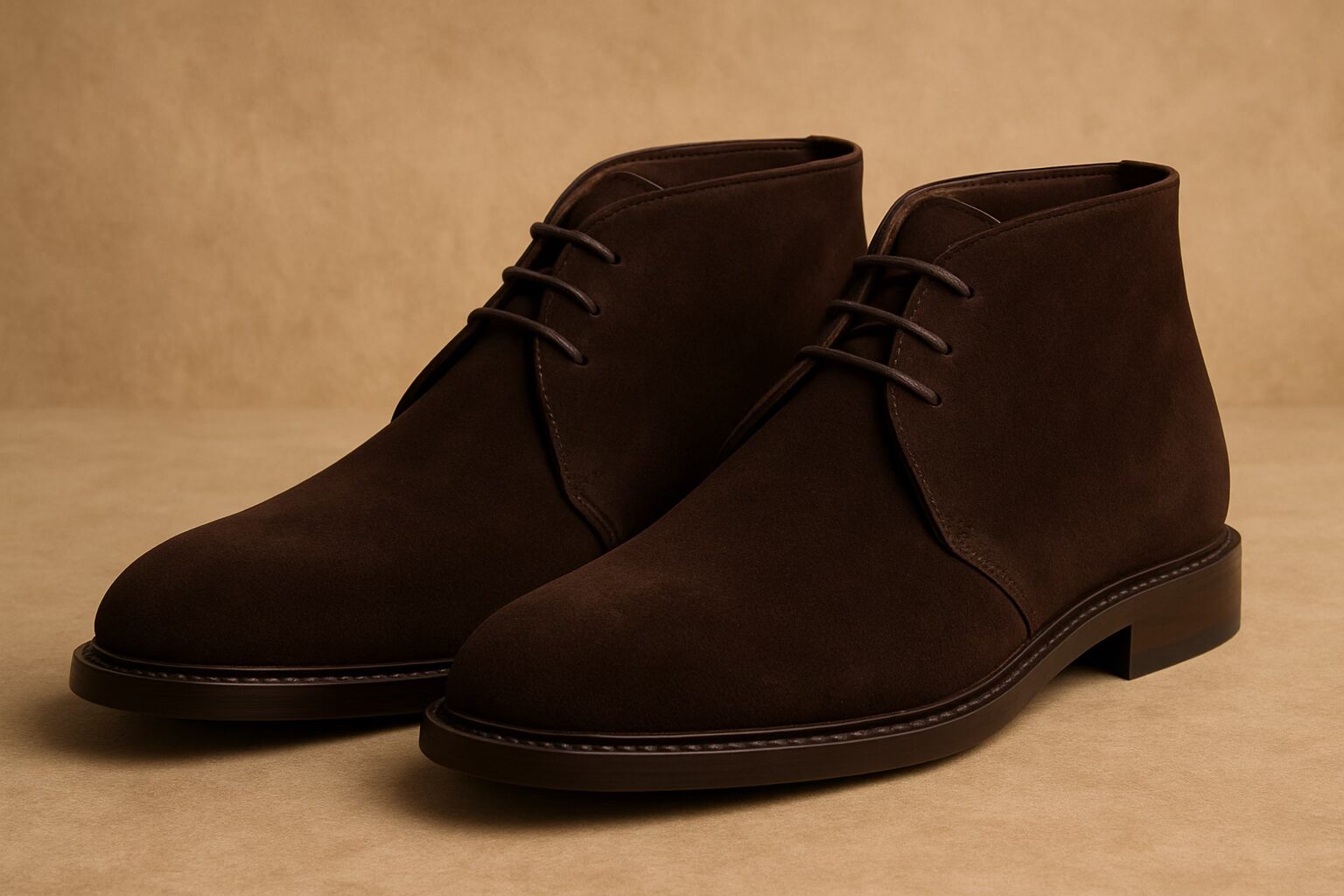
Saddle Shoes
Saddle shoes feature a contrasting “saddle” piece across the midfoot. Originating in the U.S. in 1906 (first as golf shoes), they became a 1950s campus staple and remain icons of preppy style.
They pair naturally with polos, chinos, and blazers—casual yet polished.
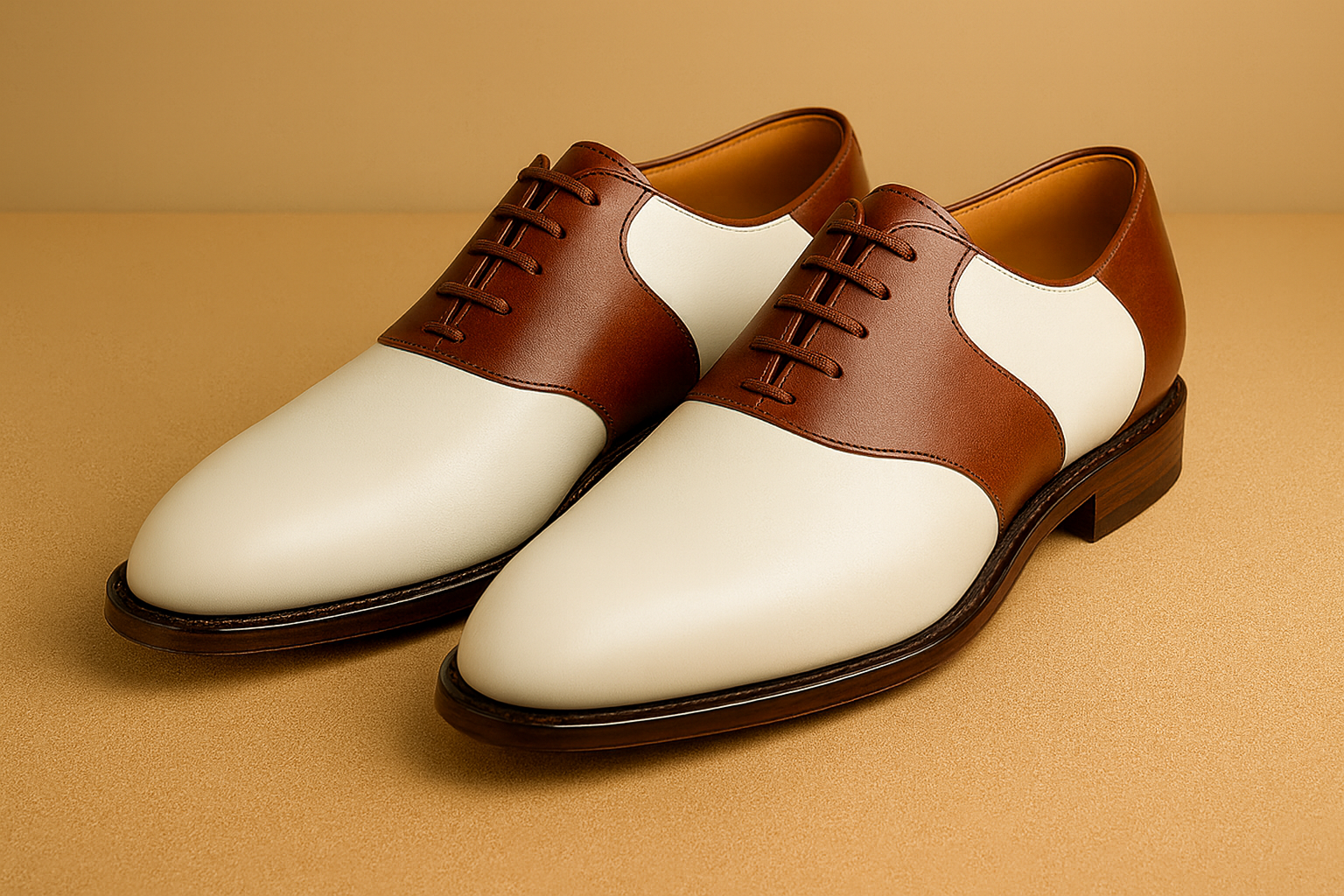
Jodhpur Boots
An ankle-high boot secured by a strap and buckle, named after India’s Jodhpur. Adopted by British cavalry in the late 19th century, the strap kept the ankle stable for riding.
Today, the sleek strap gives outfits an elegant edge, working with slim trousers and denim alike.
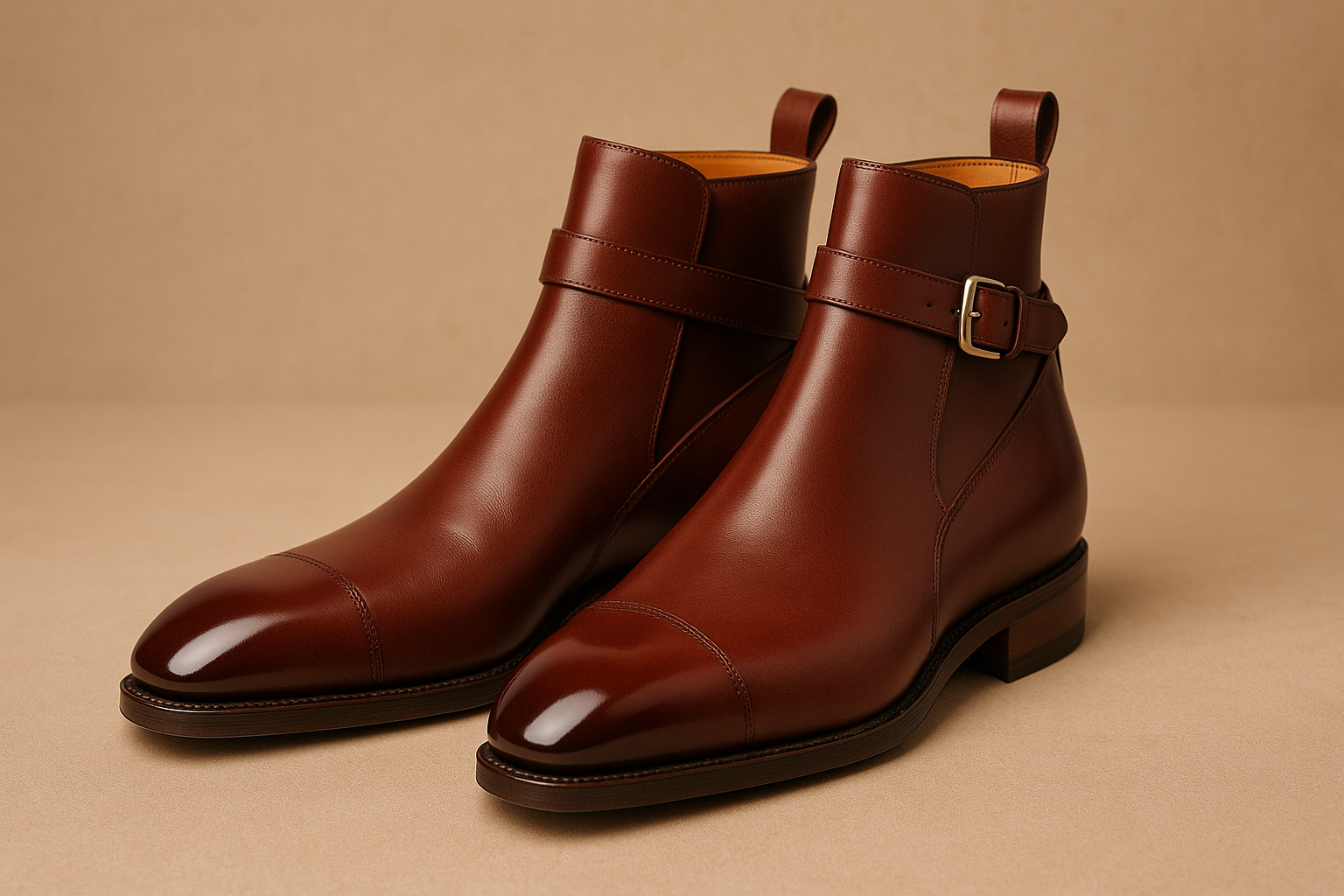
Button Boots
Popular from the 19th century to early 20th, button boots close with a row of small buttons instead of laces. A buttonhook tool aided fastening—elegant then, a bit fussy by modern standards.
They now appear mostly in vintage fashion, costume, and stage wear, but remain significant in footwear history and can deliver a uniquely classic mood.
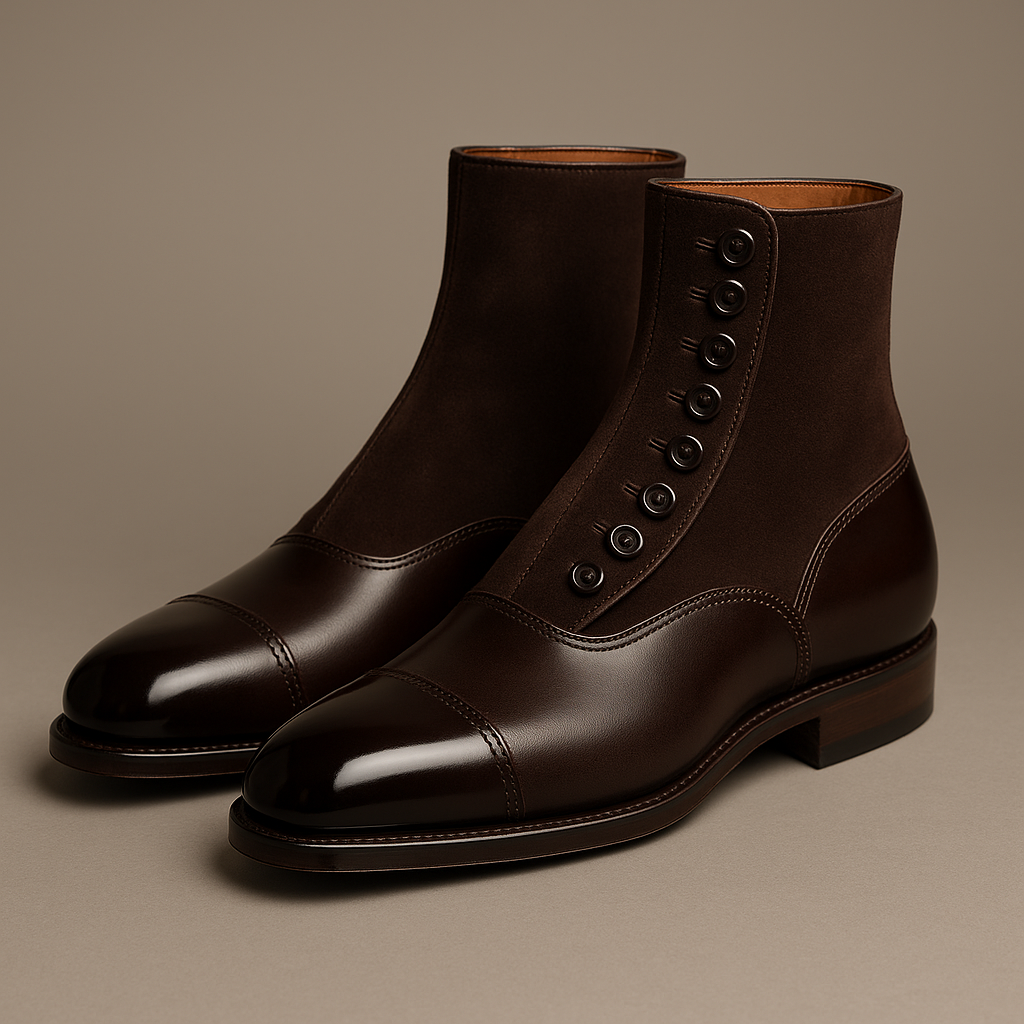
Conclusion
Across centuries, dress shoe styles evolved to balance utility and beauty. From the formal wholecut to casual button boots, each design carries history, craft, and a role in modern wardrobes.
When choosing shoes today, consider each style’s formality and your setting. Knowing the background and culture behind the design deepens appreciation and helps you select the right pair for the moment.
Good shoes are more than footwear—they express the wearer’s character. Cared for over time, they become lifelong companions with richer patina and attachment.
Sponsorship Information
“The Makers Guild” is an international community site that shares craft and shoe culture. We are currently welcoming sponsorships from partners who support our mission.
